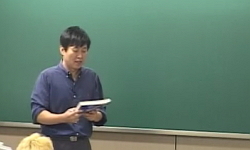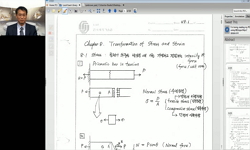An advanced model for the linear flutter analysis is introduced in this paper. Higher-order beam structural models are developed by using the Carrera Unified Formulation, which allows for the straightforward implementation of arbitrarily rich displace...
http://chineseinput.net/에서 pinyin(병음)방식으로 중국어를 변환할 수 있습니다.
변환된 중국어를 복사하여 사용하시면 됩니다.
- 中文 을 입력하시려면 zhongwen을 입력하시고 space를누르시면됩니다.
- 北京 을 입력하시려면 beijing을 입력하시고 space를 누르시면 됩니다.
https://www.riss.kr/link?id=A101685467
- 저자
- 발행기관
- 학술지명
- 권호사항
-
발행연도
2014
-
작성언어
English
- 주제어
-
등재정보
SCOPUS,ESCI
-
자료형태
학술저널
-
수록면
291-310(20쪽)
- 제공처
-
0
상세조회 -
0
다운로드
부가정보
다국어 초록 (Multilingual Abstract)
An advanced model for the linear flutter analysis is introduced in this paper. Higher-order beam structural models are developed by using the Carrera Unified Formulation, which allows for the straightforward implementation of arbitrarily rich displacement fields without the need of a-priori kinematic assumptions. The strong form of the principle of virtual displacements is used to obtain the equations of motion and the natural boundary conditions for beams in free vibration. An exact dynamic stiffness matrix is then developed by relating the amplitudes of harmonically varying loads to those of the responses. The resulting dynamic stiffness matrix is used with particular reference to the Wittrick-Williams algorithm to carry out free vibration analyses. According to the doublet lattice method, the natural mode shapes are subsequently used as generalized motions for the generation of the unsteady aerodynamic generalized forces. Finally, the g-method is used to conduct flutter analyses of both isotropic and laminated composite lifting surfaces. The obtained results perfectly match those from 1D and 2D finite elements and those from experimental analyses. It can be stated that refined beam models are compulsory to deal with the flutter analysis of wing models whereas classical and lower-order models (up to the second-order) are not able to detect those flutter conditions that are characterized by bending-torsion couplings.
동일학술지(권/호) 다른 논문
-
On the development of the Anuloid, a disk-shaped VTOL aircraft for urban areas
- Techno-Press
- Petrolo, Marco
- 2014
- SCOPUS,ESCI
-
Design of a morphing actuated aileron with chiral composite internal structure
- Techno-Press
- Airoldi, Alessandro
- 2014
- SCOPUS,ESCI
-
- Techno-Press
- Khardi, Salah
- 2014
- SCOPUS,ESCI
-
Accuracy and applicable range of a reconstruction technique for hybrid rockets
- Techno-Press
- Nagata, Harunori
- 2014
- SCOPUS,ESCI






 ScienceON
ScienceON





